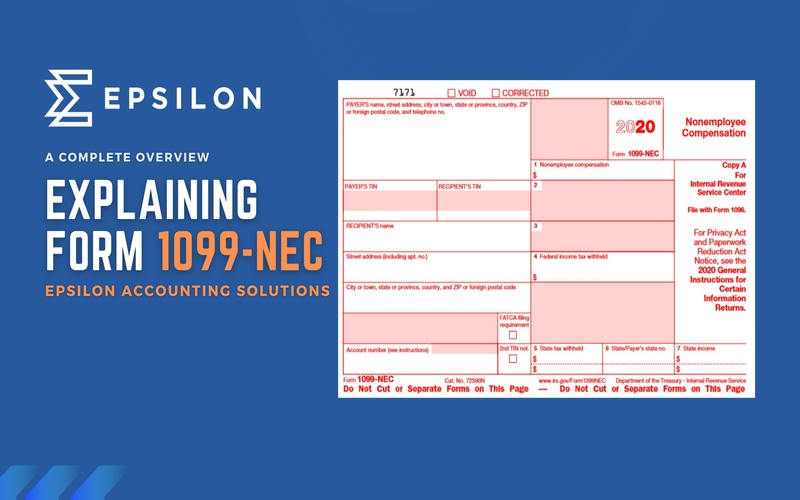An important part of the tax system, Form 1099-NEC is a form that’s essential for reporting non-employee remuneration. It’s critical to comprehend the intricacies of Form 1099-NEC if you’re a freelancer getting paid for your work or a business owner hiring independent contractors. We’ll go over the main features of this form, its function, and the ramifications for payers and receivers in this post.
What is Form 1099-NEC?
Form 1099-NEC, which is also called non-employee compensation, is an IRS tax form used to record money paid to self-employed, freelancer, and independent contractor individuals. In order to handle the reporting of non-employee remuneration, it was reintroduced in 2020.
Why did the IRS reintroduce 1099-NEC?
In 2020, the IRS brought back Form 1099-NEC to fulfill a certain reporting requirement pertaining to non-employee salaries. But in order to improve clarity and expedite the reporting process for taxpayers as well as the IRS, the IRS realized how important it was to separate non-employee payments. Form 1099-NEC has been reinstated for the following reasons:
1. Clarity and Specificity
A sizable amount of miscellaneous income is non-employee compensation, which is frequently linked to independent contractors and freelancers.
2. Confusion Elimination
By using a special form for non-employee compensation, taxpayers may simply identify and report this particular sort of income, thereby reducing the possibility of confusion. Reducing complexity helps ensure more precise tax filing. Accountant for Small business can assist in accurately documenting and reporting non-employee compensation, reducing the risk of errors or oversights.
3. Enhanced Compliance with regulations
The IRS is capable of tracking payments made to independent contractors more efficiently by dividing non-employee compensation into its own form.
4. Compliance with Taxpayer requirements
The return of Form 1099-NEC is in line with the evolving gig economy and the rise in the number of people engaged in independent contracting. In addition to meeting the unique reporting requirements of payers and recipients, the provision of a particular form for non-employee payments reflects the changing nature of employment arrangements.
What is non-employee compensation?
Payments given to those who work for a company or organization but are not considered employees are referred to as non-employee compensation.
These people are frequently self-employed professionals, freelancers, or independent contractors. Non-employee remuneration comes in a variety of shapes and sizes, but it’s usually connected to a straight trade of services for money
Payments to the following are instances of non-employee compensation:
- Creators of graphics producing marketing collateral.
- Consultants who offer suggestions on business tactics.
- Independent authors supplying material for a magazine.
- IT specialists supporting particular initiatives.
- Individual business owners providing specialist services.
It’s critical that companies use Form 1099-NEC to appropriately record non-employee compensation to the IRS.
In order to assist both the payer and the recipient in meeting their tax requirements, this form includes information concerning payments made to independent contractors.
Final Words
Being knowledgeable about Form 1099-NEC is crucial for a smooth tax filing procedure, regardless of whether you’re an independent contractor comprehending your tax requirements or a business owner managing your reporting obligations. Form 1099-NEC is still very important, even as tax laws change.
Businesses and independent contractors can support a more accountable and compliant tax ecosystem by accepting a clear understanding of its purpose and meeting reporting deadlines.
Expert Opinion
Ahmed Baqir is a CPA with over 9 years of experience. He has worked with the Oklahoma Tax Commission alongside with the Internal Revenue Service. Ahmed is a former alumnus of the Top 20 CPA firm and is result oriented. Ahmed assist small businesses in Tax compliance under IRS regulations, navigating businesses through intricacies of tax forms, such as Form 1099-NEC.

